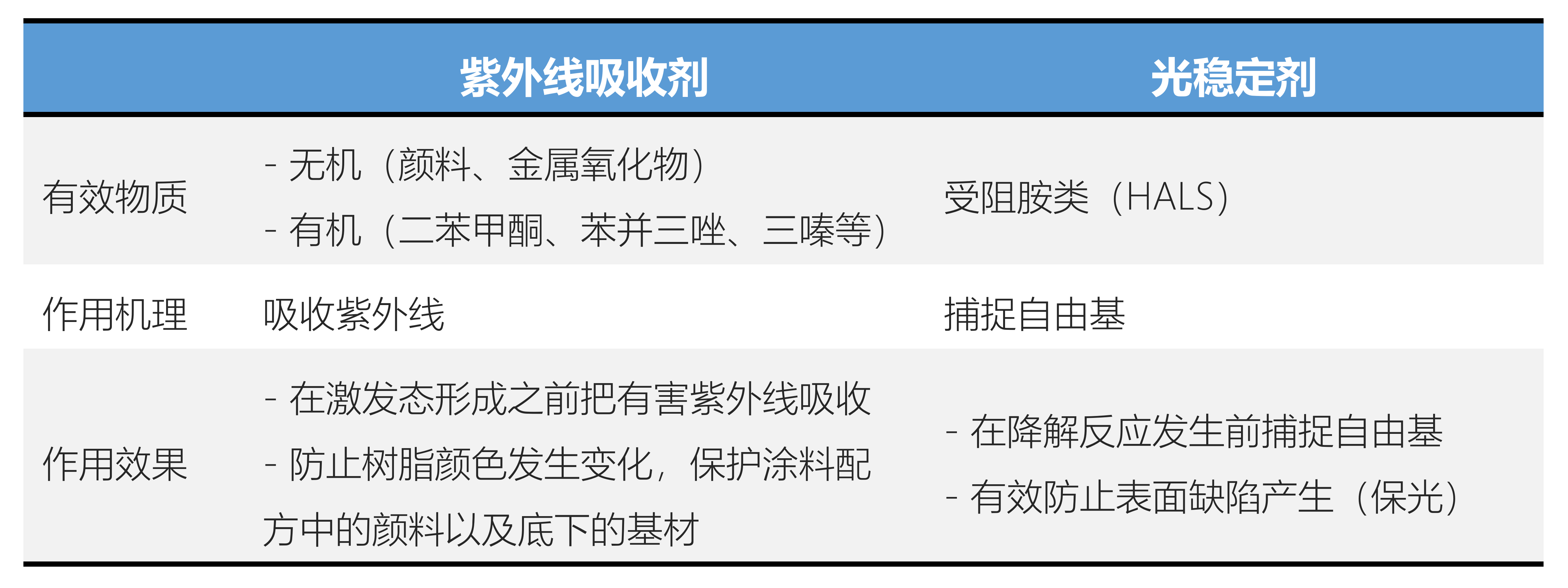Products丨UV absorber l Anti-aging coating
Release time:
2024-07-12
As a material with decorative and protective functions, extending the life of the coating can increase the service life of the protected object. Light aging and oxidation are the biggest factors affecting the coating.
How to make the coating have excellent light aging resistance and anti-oxidation performance?
Answer: UV absorbers and light stabilizers are added to the paint.

Product Introduction
0 1Ultraviolet light absorber: UV1130
Physical properties
Yellow to light amber viscous liquid UV absorber, 20°C, viscosity--7400cPs, density--1.17g/cm 3 .
Product Features
The maximum absorption wavelength in toluene solution is 346nm.
It can be mixed with all common solvents and is easy to emulsify. A co-solvent (diethylene glycol diethyl ether) needs to be added to the aqueous system.
Its high temperature resistance and extraction resistance enable it to meet the high-demand automotive and industrial coatings requirements.
It can also provide adequate protection for sensitive materials such as wood.
0 2 Light stabilizer: HALS-292
Physical properties
Light yellow transparent liquid hindered amine light stabilizer, molecular weight--509/370, flash point--92°C, boiling point--220-222°C, dynamic viscosity at 20°C--400cPs, density--0.99g/ cm3 .
Chemical composition
Sebacic acid ester mixture.
Product Features
The active ingredient of HALS-292 is almost 100%, and no crystals will precipitate at room temperature.
Storage at 0°C may cause crystallization, which can be easily liquefied with a slight heating without damaging the product's efficacy. ➢ A mixture of two active ingredients, it is this combination that keeps the product transparent.
It is miscible with most organic solvents used in coatings at a ratio of more than 50%, but its solubility in water is less than 0.01%.
Possible interactions between 292 and coating ingredients such as acid catalysts need to be carefully evaluated. If negative interactions occur, 123 is recommended. Its solubility in water requires a cosolvent such as butyl carbitol.

Q: How to use UV absorbers and light stabilizers together?
Answer: Generally, the ratio of UV absorber to light stabilizer is 1:2. The ratio can be adjusted according to the test results.
Service Hotline:

Focus on us
Contact Information
E-mail:hy@haiyi21cn.com
Address: East Block, 3rd Floor, Mid-term Building, 2000 Zhongshan North Road, Putuo District, Shanghai
SEOWebsite construction:China Enterprise Power PudongThe license number for the production and operation of hazardous chemicals is: Shanghai (Feng) Emergency Management Xu [2021]202233(FY)
The license number for the production and operation of hazardous chemicals is: Shanghai (Feng) Emergency Management Xu [2021]202233(FY)

Hotline:
400-088-7155
-
E-mail:hy@haiyi21cn.com
Address: East Block, 3rd Floor, Mid-term Building, 2000 Zhongshan North Road, Putuo District, Shanghai
All rights reserved©2022 Shanghai Haiyi Technology & Trade Co., Ltd
The license number for the production and operation of hazardous chemicals is: Shanghai (Feng) Emergency Management Xu [2021]202233(FY)













